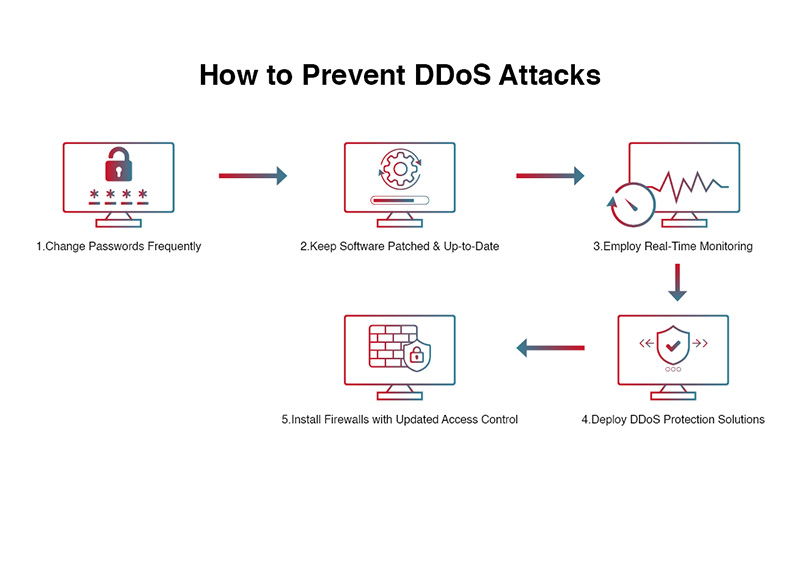How to Prevent a DDoS Attack
A Distributed Denial of Service (DDoS) attack is a malicious attempt to disrupt the normal traffic of a targeted server, service or network by overwhelming it with a flood of internet traffic. This can lead to severe downtime, loss of revenue, and damage to your organization’s reputation. It is crucial to take proactive measures to prevent a DDoS attack from occurring. In this article, we will discuss some effective strategies to safeguard your online presence.
Educate Your Team
One of the first steps in preventing a DDoS attack is to educate your team on the risks and consequences associated with such attacks. Make sure that everyone in your organization is aware of the importance of cybersecurity and knows how to recognize suspicious activity. Conduct regular training sessions to keep your team informed about the latest threats and best practices for protecting your network.
Implement DDoS Protection Services
Invest in DDoS protection services that are specifically designed to detect and mitigate attacks in real-time. These services use advanced algorithms to analyze incoming traffic and identify potential threats. By using a combination of network monitoring, traffic filtering, and threat intelligence, DDoS protection services can help you defend against even the most sophisticated attacks.
Secure Your Network Infrastructure
Make sure that your network infrastructure is properly secured to prevent unauthorized access and potential vulnerabilities. Implement strong passwords, encryption protocols, and access controls to limit the risk of a DDoS attack. Regularly update your software and firmware to patch any known security flaws and keep your network protected against new threats.
Monitor Your Network Traffic
Monitor your network traffic for any unusual patterns or spikes in activity that could indicate a DDoS attack is in progress. Use network monitoring tools to track your bandwidth usage, traffic sources, and server performance in real-time. By detecting an attack early on, you can take immediate action to mitigate its impact and prevent further damage to your network.
Backup Your Data Regularly
Regularly back up your data to secure offsite locations to ensure that you can quickly recover in the event of a DDoS attack. Implement a robust disaster recovery plan that includes frequent backups, data replication, and failover systems to maintain business continuity. By having a backup of your critical data, you can minimize the impact of an attack and quickly restore your services to normal operation.
Engage with Your ISP
Work closely with your Internet Service Provider (ISP) to establish a DDoS response plan and ensure that they have the necessary tools and resources to protect your network. Your ISP can provide you with additional bandwidth, traffic filtering, and monitoring services to help mitigate the effects of a DDoS attack. By partnering with your ISP, you can strengthen your defenses and improve your overall security posture.
Stay Informed and Prepared
Stay informed about the latest trends in DDoS attacks and cybersecurity threats to stay one step ahead of potential attackers. Regularly review your security policies, conduct penetration testing, and update your incident response plan to ensure that you are prepared to respond effectively to a DDoS attack. By staying vigilant and proactive, you can reduce the likelihood of being targeted by malicious actors and protect your organization from costly downtime and data breaches.
By following these proactive strategies and best practices, you can significantly reduce the risk of falling victim to a DDoS attack and safeguard your organization’s online presence. Protecting your network from DDoS attacks requires a multi-layered approach that combines education, technology, and collaboration with your ISP and cybersecurity partners. With the right tools and mindset, you can minimize the impact of an attack and maintain the integrity of your online services.
